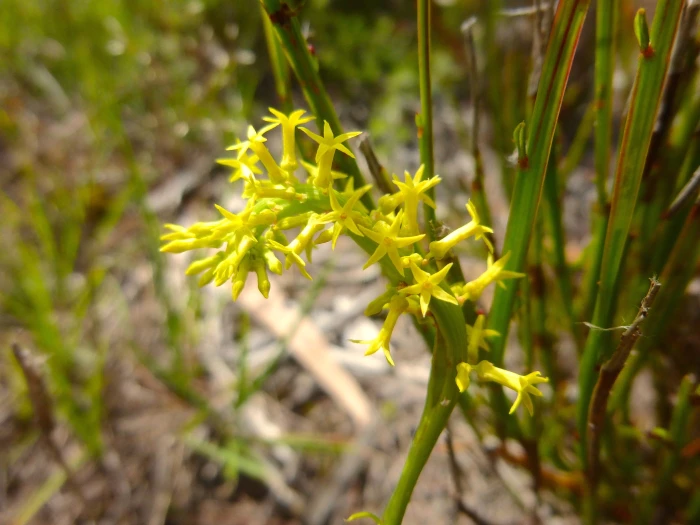Slender Stackhousia
(Stackhousia viminea)
Slender Stackhousia (Stackhousia viminea)
/
/

Kiri Bee
CC BY 4.0
Image By:
Kiri Bee
Recorded By:
Copyright:
CC BY 4.0
Copyright Notice:
Photo by: Kiri Bee | License Type: CC BY 4.0 | License URL: http://creativecommons.org/licenses/by/4.0/ | Rights Holder: Kiri Bee | Publisher: iNaturalist | Date Created: 2019-11-03T22:56:45-08:00 |
















Estimated Native Range
Climate Requirements for Pharr, Texas
| This Plant | Your Site | Plant Suitability for Your Location | ||
|---|---|---|---|---|
| • Precipitation | 5" - 85" | 23" | Your precipitation may be insufficient for this plant. Irrigate N" / year. | Irrigate N" / year |
| • High Temp. | 66°F - 104°F | 96°F | Your summer temperatures are normal for this plant. | Excellent |
| • Low Temp. | 27°F - 72°F | 48°F | Your winter temperatures are normal for this plant | Excellent |
This plant should grow well at your location with about N inches per year (Y minutes per month) of irrigation.
Summary
Stackhousia viminea, commonly known as Slender Stackhousia, is a perennial herb that is native to a variety of habitats including coastal heathland, grassy woodlands, and open forests, primarily in southeastern Australia. It typically grows up to 28 inches (70 cm) tall and has a slender, erect form. Slender Stackhousia is characterized by its small, tubular, yellowish-red flowers that bloom in spring and summer, forming terminal spikes that are moderately showy. The plant is named after the English botanist John Stackhouse and was first described by botanist James Edward Smith.
In cultivation, Slender Stackhousia is valued for its delicate appearance and the subtle beauty of its flowers. It is often used in native plant gardens, as a border plant, or in naturalized areas where its preference for moist conditions can be accommodated. It thrives in well-drained soils with consistent moisture and can tolerate partial shade, though it flowers best in full sun. While not commonly found in cultivation, it can be an interesting addition to a garden that focuses on native or drought-tolerant plants. Gardeners should be aware that it may require protection from snails and slugs, which can damage the foliage.CC BY-SA 4.0
In cultivation, Slender Stackhousia is valued for its delicate appearance and the subtle beauty of its flowers. It is often used in native plant gardens, as a border plant, or in naturalized areas where its preference for moist conditions can be accommodated. It thrives in well-drained soils with consistent moisture and can tolerate partial shade, though it flowers best in full sun. While not commonly found in cultivation, it can be an interesting addition to a garden that focuses on native or drought-tolerant plants. Gardeners should be aware that it may require protection from snails and slugs, which can damage the foliage.CC BY-SA 4.0
Plant Description
- Plant Type: Herb
- Height: 1.6-2.6 feet
- Width: 0.5-1 feet
- Growth Rate: Moderate
- Flower Color: White
- Flowering Season: Spring, Summer
- Leaf Retention: Evergreen
Growth Requirements
- Sun: Full Sun
- Water: Medium
- Drainage: Medium, Fast
Common Uses
Border Plant, Butterfly Garden, Low Maintenance
Natural Habitat
Coastal heathland, grassy woodlands, and open forests in southeastern Australia
Other Names
Common Names: Slender Stackhousia
Scientific Names: Stackhousia viminea, Stackhousia doryopetala, Stackhousia flava, Stackhousia monogyna, Stackhousia monogyna, Stackhousia viminea f. flava, Stackhousia viminea f. genuina
GBIF Accepted Name: Stackhousia viminea